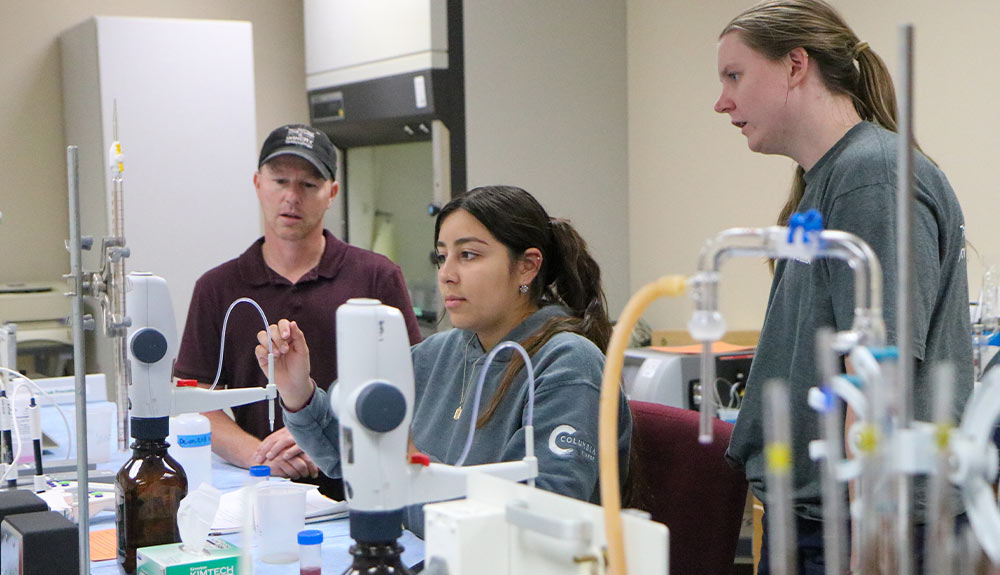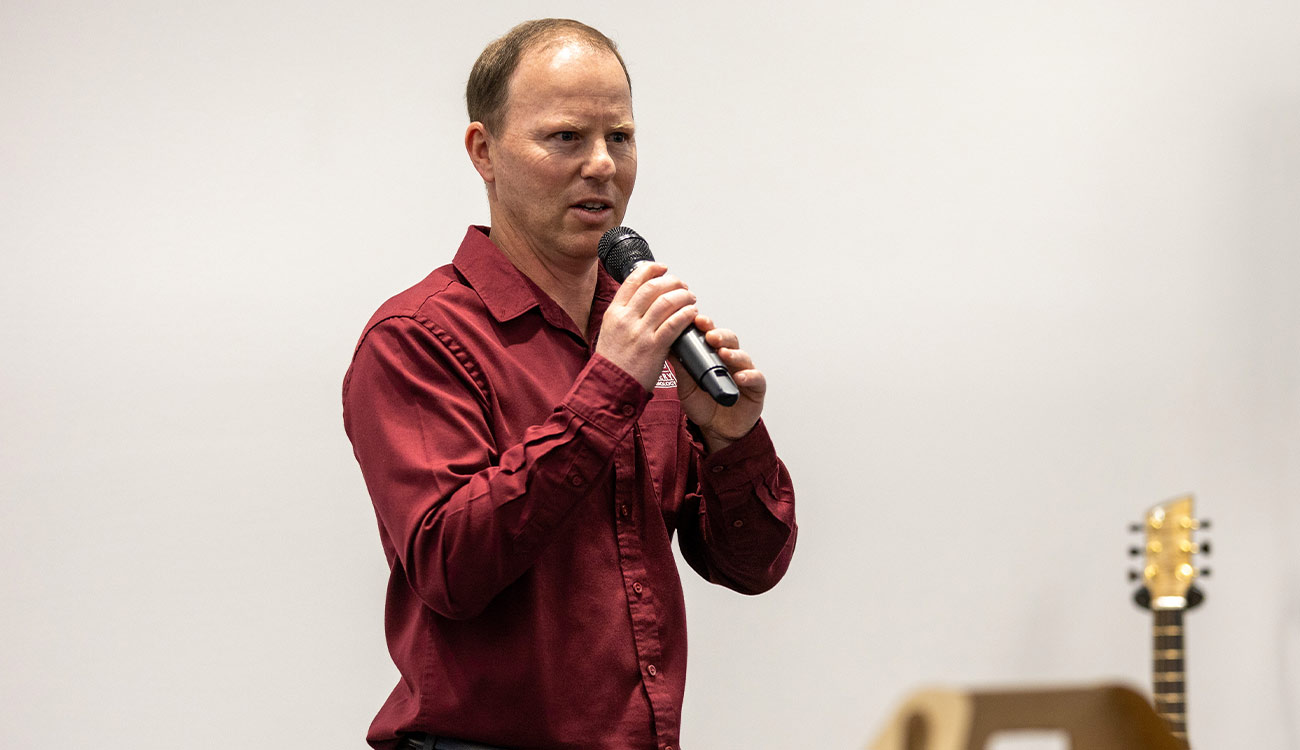The vocabulary of wine can feel overwhelming, especially to those just starting to figure out what wines they enjoy. Trent Ball, chair of Yakima Valley College’s Agriculture Department and Vineyard and Winery Technology Program, has more than two decades of experience working in Washington’s wine industry. Under his leadership since 2008, the college’s teaching winery, Yakima Valley Vintners, has won more than 200 medals in state and regional wine competitions.
In our inaugural “Ask the Expert” column, Ball shares some simple tips for how anyone can better taste and appreciate wine.
For someone who’s just starting to explore which wines they enjoy, what are the basic steps they should take when tasting wine?
I think the best thing you can always do is drink what you enjoy, don’t let anyone else tell you what you should like. But, also be willing to stretch and try new things because our tastes and preferences evolve over time. If you prefer sweetness in your beverages, then it is a good starting place to try off-dry and fruity whites such as Riesling, Pinot Gris or Viognier. Low tannin reds are also a good entry point, examples could be Lemberger, Primitivo or Grenache.
Another thing I would encourage when exploring wine is pairing it with food. It can be as simple as different cheeses or charcuterie, or more complex like a multi-course meal. Wine and food go so naturally together. A common pairing trick is to try and match wines with similar characteristics, such as an oaked white wine with butter-based sauces or foods, or acid-driven whites like Pinot Gris or Sauvignon Blanc with lemon/citrus or other acidic foods. Fatty foods, like a steak, pair so nicely with wines that have astringency and tannins like a Cabernet Sauvignon or a big Syrah.
Some people are very particular about how they swirl, sniff and sip their wine. Are there certain techniques that really make a difference?
The purpose of swirling the glass is to create some friction and aerate the wine so it is easier to smell the aromas. To be able to smell an aroma such as peach, green tea, clove, etc., the compound must be volatilized (converted to a gas or vapor); the swirling of the glass increases this and makes it easier to smell.
Don’t be shy, sink your nose deep into the glass after swirling to see what you detect, take a break for 10-15 seconds, then do it again. When you taste the wine really focus on what is happening in your mouth, because there you can detect the sweetness, bitterness and acidity of wines, as well as mouthfeel characteristics such as astringency (drying) from the tannins. Being tuned in to your senses can enhance the overall experience.
If you’re going to be tasting several wines at the same time and/or visiting multiple wineries the same day, how can you make the most of that experience?
Wine tasting is such a fun and social experience, it is always the best experienced with good company!
If you plan to visit several wineries, here are a couple simple tips that can help make it a fun and memorable experience.
- Make sure you eat before going (carbs are not the best, proteins and fats are better), and pace the experience by always mixing in time for water.
- If your goal is to taste a lot of different wines, then the professional technique is to sip and spit. You still get all the fun sensory experience of the aromas and flavors, but it allows for more sampling of other wines. Tasting rooms appreciate it when you ask for a spittoon or dump bucket, they know you will be a responsible taster.

How much does glassware really matter to the tasting experience?
I like to describe it as similar to a picture and a frame. Though the picture (the wine) may stay the same, the impression and maybe even the appreciation of that picture will change based on the quality of the frame (the glass) that it is in. In a similar manner, the type of glass that is used can frame the wine so that its qualities are best showcased.
Some glasses are very versatile, and that is what you typically see in most tasting rooms because they work decently with many types of wines. However, there are specific glass shapes that are better suited to express the true aroma and tastes of a wine. Sauvignon Blanc in a tulip-shaped glass, or an oaked Chardonnay in a large bowl-shaped glass are just a couple examples.
This is always a really fun exercise: to compare the impact that a glass has on the tasting experience. There actually is quite the science that has gone into the design of glasses for specific varietals. For instance, Sauvignon Blanc is a very aromatic white that generally has a lot of acidity. The Sauvignon Blanc glass is typically a narrow tulip, that funnels the aromas up easily, and when you taste it locates the wine more to the center of your palate to reduce the impact of the acidity, which is most easily identifiable on the sides of the mouth.
The list of aromas and tastes used to describe wines can seem endless and overwhelming. What can someone do to feel less intimidated?
Identifying specific aromas can feel like such a challenge. Often you are smelling something but have a hard time stating exactly what it is. One of our least used senses is our ability to smell, we often take that for granted. However, there is a prime opportunity to work on that skill right in your own home. It is the stop and smell the roses approach. When you are cooking, smell the spices, vegetables and sauces that you are using. This simple activity starts to build a memory of the aroma that can be more easily recalled when wine tasting. Mealtime is a great way to build your sensory recall and recognition.
Tasting wines with others can also be so helpful. First, try to identify what you
are smelling without anyone else talking. Then, talk through it together as a group.
That discussion time is valuable because everyone has a unique ability to recognize
certain things more easily than others. These simple training activities will make
a big improvement in your ability.
Story and photos by Dustin Wunderlich, director of community relations.
